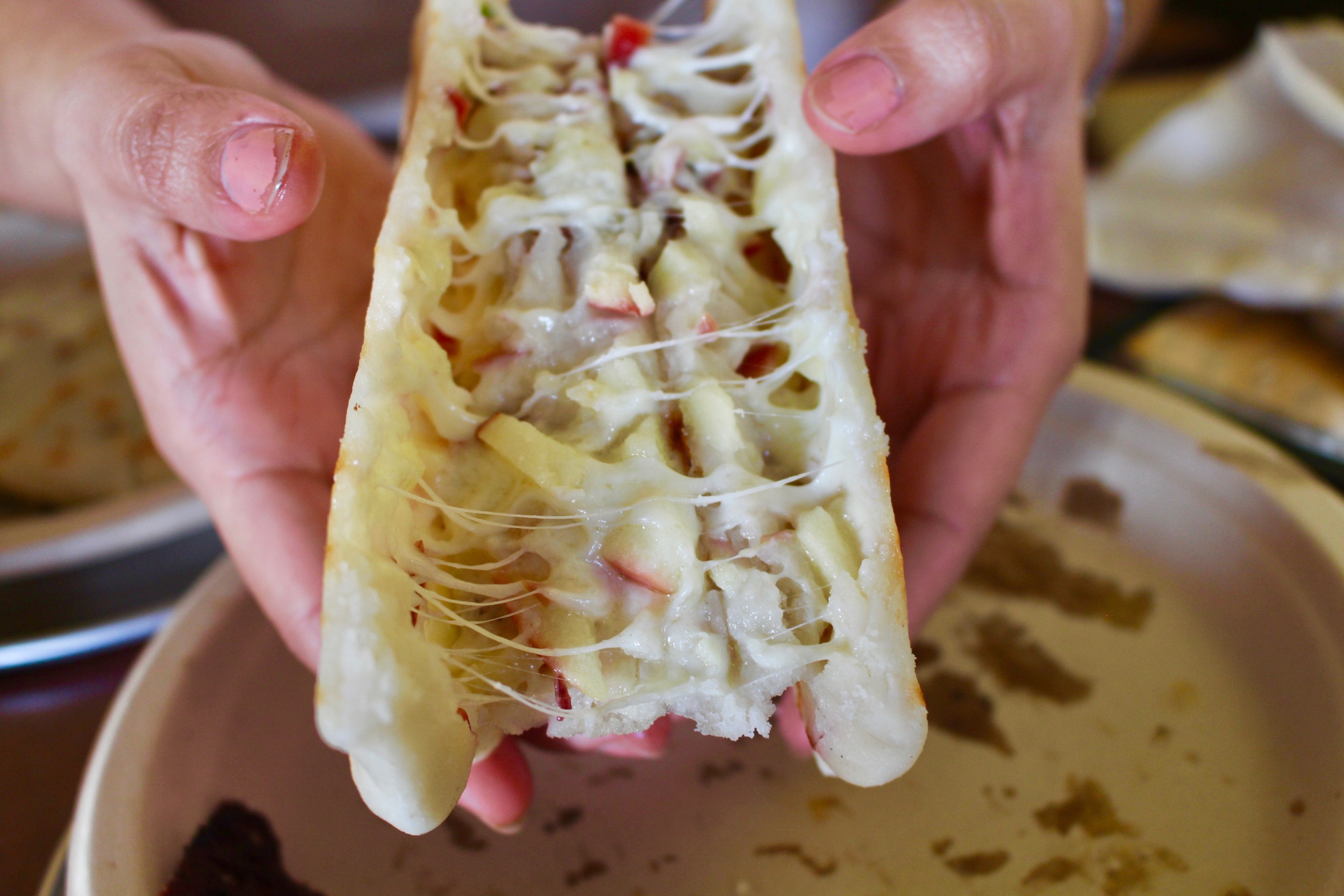Most of us know pupusas. Those delicious, griddle-cooked masa discs filled with cheese and other things like chicharron or loroco flowers that are eaten with piles of pickled cabbage, and smothered in a tomato salsa. They always hit the spot.
However, there is a lesser-known pupusa style that only first-generation Salvadorans and true pupusa lovers know about: pupusas made with rice flour.
And dare I say...they may be better than the corn ones?
Rice flour changes the pupusa game and many Salvadorans will even go as far as saying “once you go rice, you never go back.” In El Salvador, the metric by which pupuserias are judged by is how good their rice pupusas are — not their corn ones. Back in the homeland, it’s customary for the server to ask patrons while ordering if they want the pupusas “de arroz o de maiz.” Rice, or flour?
In Los Angeles, they can be found in the streets near MacArthur Park and your neighborhood Salvadoran restaurants, as well as a few Honduran places. But only if you are in the know and ask nicely while you order.
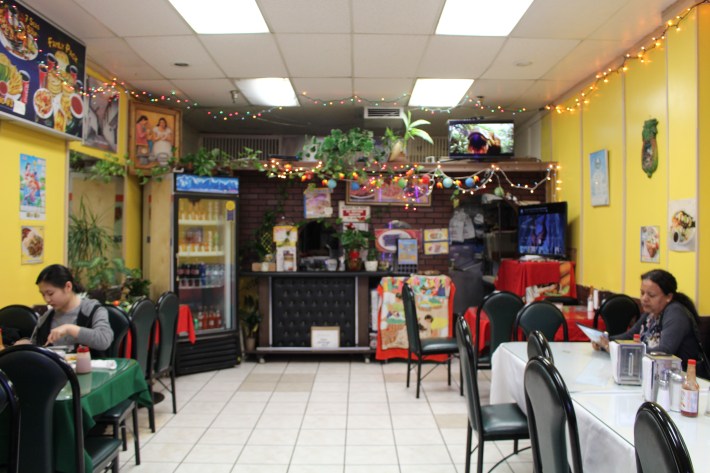
While rice dough pupusa preparation is similar to regular pupusas, there are a few differences. Rice pupusas are made using rice flour, usually from white medium-grain or long-grain rice varieties. Pupusas de maiz are made using masa nixtamal. To make either kind of pupusa, the flour must be mixed with water. The corn masa is combined with cold or room-temperature water, and the rice flour must be mixed with hot, boiling water with a wooden spoon to avoid burning hands. Once it’s mixed and the water is fully incorporated, the rice masa is left alone to cool for a few minutes before handling. When patting the masa and filling together, expert Salvadoran cooks will have melted butter ready or oil to prevent the masa from sticking to any fingers because they are slick like that. If some type of fat isn’t used to handle the masa, a mess should be expected.
The end result is a pupusa that is chewy yet crispy, tender yet sturdy, and savory with a hint of sweetness from the rice. “My mom always makes de arroz, and so I associate that with home,” says Victor Interiano, the Salvadoran-American creator/cartoonist from Dichos de Un Bicho, a popular website producing Central-American commentary. “I feel that it alters the flavor of the cheese, beans, and chicharron for the better,” Interiano concludes. The arroz [pupusas] feel lighter, too.”
“Honestly, they deserve more praise than they get. The first thing I remember is the distinctive red label on Harina Faraón. I watched my mom melt the butter, get the hot water ready, and prepare the masa. And she would tell me that [it needed to be] handled differently than masa de maiz.”
Rice, made its way to Latin America via colonization in the 1700s. It is not clear when rice flour began making its appearance with pupusas. One story is that in the 1970s, El Salvador suffered a shortage of corn and consequently, rice pupusas became common in the cuisine. Other stories explain that rice could easily be made into flour by grinding it at home and the rest is Salvi culinary destiny.

Unlike corn masa, which has various uses in Salvadoran cuisine — pupusas, pastelitos, tortillas — rice masa is only used for pupusas. Some restaurants owners like Maria Mulato of Olocuilta prefer to make the masa fresh to order every single time. “It takes longer but we make it in the moment its ordered because they turn out better.” Her trick during a rush of rice pupusa orders is to use ice to quickly cool the dough before she handles it.
Before you hit the streets on your rice pupusa quest: Most restaurants in L.A. won’t advertise rice flour pupusas, but if you ask for the rice kind, they will make them. Last but not least, heed this pro-tip: Rice pupusas should only be eaten fresh. Otherwise, the beloved tender texture will be lost and become a Crossfit exercise for your jaw.
In fairness, not all Salvadorans hail rice pupusas as superior. Some still prefer the corn ones no matter what. It’s a tasty debate where everyone wins.
Here’s a handy list of Salvadoran restaurants to start you off right on your rice pupusa journey.
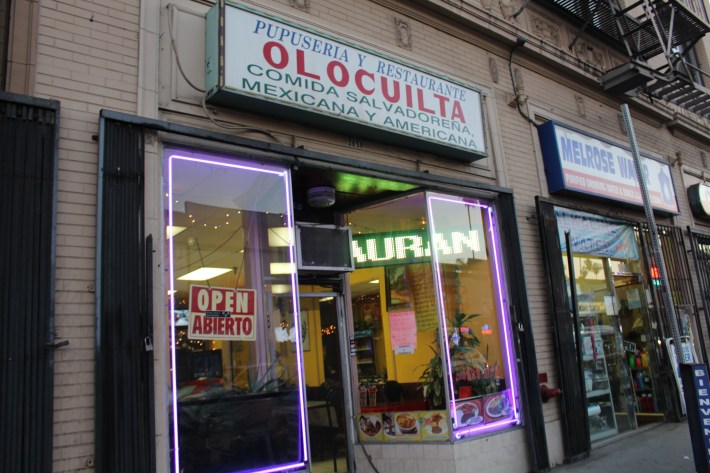
Olocuilta
Located in the heart of Koreatown a block away from Beer Belly, this cozy restaurant serves up rice pupusas daily to mostly Korean customers. Maria Mulato, owner, bought the restaurant from Oaxacan owners in 2005 and decided to keep the name. She was excited about this name since Olocuilta is the municipality in El Salvador most recognized as the birthplace of the pupusa and is known for starting the rice variety. Only street parking is available.
3958 W 6th St, Los Angeles, (213) 383-3070
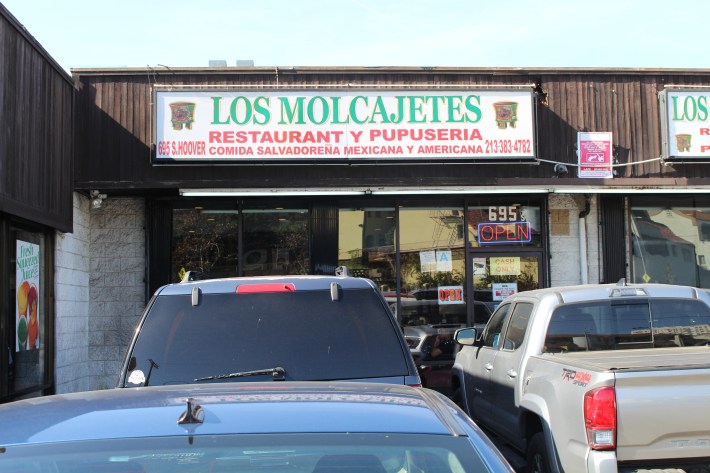
Los Molcajetes
There are a few pupuserias under the same name but the Westlake 8th and Hoover location is the one where Salvadoran locals always return to. The rice pupusas here have a razor-thin crunch. Los Molcajetes is also an opportunity to travel back in time to the 80s. The décor has stayed the same. The overcrowded parking lot is still overcrowded, and thankfully the homey flavor also remains.
695 Hoover St, Los Angeles, (213) 388-8994
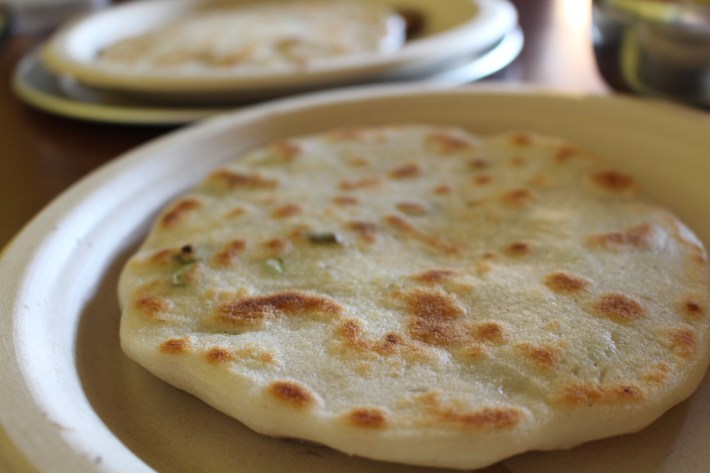
Con Sabor
Tucked inside of a shopping plaza in the West Adams neighborhood bordering Culver City, this is a vegetarian’s pupusa dream come true. With over 20 different vegetarian pupusa options, including ones made with beets or apples. These new-school flavors complement the rice pupusas perfectly. They also serve the traditional chicharron filling and not-so-traditional bacon and shrimp to name a few. Con Sabor is down the street from Con Sabor A Peru, both are very close but the Salvadoran one is located right on the corner.
5105 Venice Blvd. Los Angeles, (323) 936-0231

Comalapa
Named after the municipality in La Paz, a department in the south-central part of El Salvador, Comalapa is for the family. Not only are the pupusas always thick and plump, it’s also an immersive experience with lots of Salvadoran décor and a constant mixtape of 60s and 70s music hits from El Salvador like Los Vikings de Usulutan. It is Salvadoran grandparent approved, too.
6320 E. Florence Ave. Bell Gardens, (562)776-5130
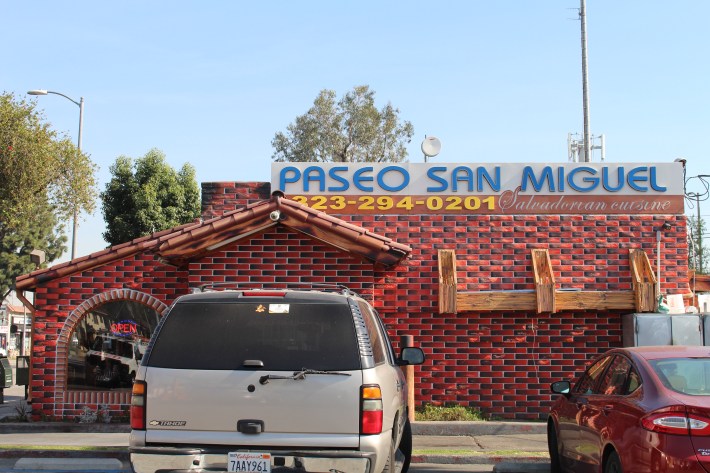
Paseo San Miguel
Ask Salvadorans in South L.A. for a solid Salvadoran restaurant and Paseo San Miguel will always be among their top three. With five locations throughout the southern L.A. area, and plans to open two more, Paseo San Miguel is a crowd favorite. There might be a wait but their rice pupusas are definitely worth it. Osman Morales, owner, enjoys the diversity of his customers and attributes the popularity to the distinct, regional flavor of San Miguel, El Salvador.
1560 W MLK Blvd, Los Angeles, (323) 294-0201
